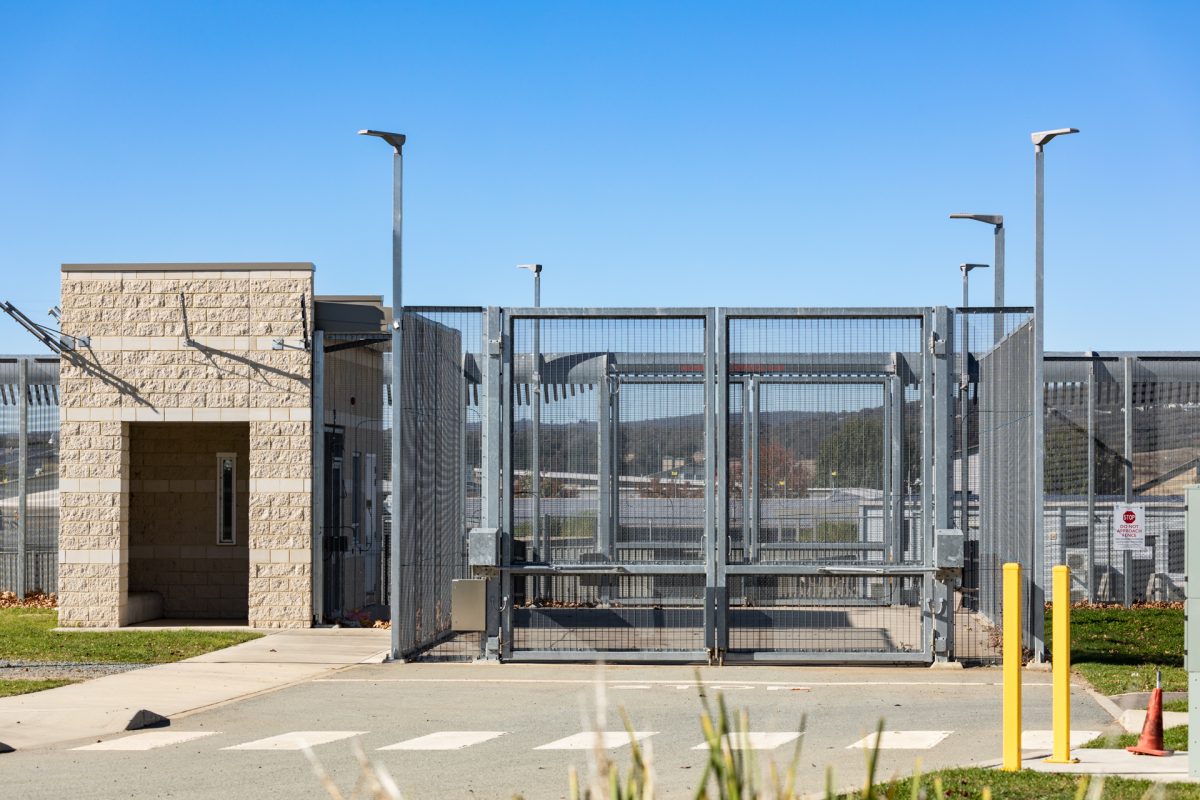
The government has released the Alexander Maconochie Centre Detainee Handbook. Photo: Michelle Kroll.
So you’ve (allegedly) committed your crime, been arrested and police clapped handcuffs over your wrists before you were dragged off to Canberra’s jail. What can you expect when you are walked through the doors at the Alexander Maconochie Centre (AMC)?
If you’ve ever wondered what it might be like to become a detainee at the prison, a newly released handbook might give you some idea.
In response to a Freedom of Information request, the ACT Justice and Community Safety Directorate has released the AMC Detainee Handbook, which tells new inmates about life in the jail.
However, it should be noted that this is a best-case scenario for detainees and reality may not reflect the ‘brochure’. Despite the talk, the facility that sits off the Monaro Highway is allegedly not human rights compliant. There are well-documented riots and assaults, and there has even been a hostage situation. In addition, a former inmate told Region the prospect of jail doesn’t deter people from committing crimes.
Life at AMC begins with an induction for new detainees, detailing how their personal property will be stored, that they will be photographed and undergo a full-body scan and a COVID-19 test, and be moved to their permanent accommodation after about five days.
Detainees in cell block accommodation get three meals each day: breakfast from 7:30 am, lunch from 10:30 am and dinner from 3:30 pm. They get a ‘brew pack’ of coffee, tea and sweeteners on Saturdays, as well as a bottle of milk either every day or every second day, depending on where they are housed.
There is also filtered hot and cold water and refrigerators and freezers in all accommodation areas.

A riot resulted in extensive damage to the Alexander Maconochie Centre on 10 November 2020. Photo: Supplied.
Male detainees wear grey while women wear maroon. They are given clothes: three T-shirts, two pairs of track pants and shorts, four sets of underwear and socks, as well as thongs, sneakers and pyjamas.
“You must be fully clothed and wear shoes when you leave your unit,” the handbook says.
There are two types of accommodation: cell blocks or cottages.
Men and women are housed separately, while the handbook says a “person who identifies as transgender or a person who is born with variations in sex characteristics will have their accommodation placement assessed on an individual basis”.
Detainees are given soap, toothbrushes, toothpaste, shaving razors and towels. Those in cell blocks get a shower, toilet and basin in their cells, while those in cottages can access these in shared areas.
When it comes to sleeping, detainees get a single bed and will most likely have a cellmate. Each cell has a television and detainees are told to sweep or vacuum their cells every three days, as well as mop the floor and clean the shower, basin and toilet every week.
A bank account is set up for detainees, which can be used to buy personal items such as groceries, stationery and items from the canteen, such as protein powder, bacon, sausages, eggs, bread and cheese.
But numerous items are prohibited in the facility, including alcohol, drugs, mobile phones, tobacco, Fitbits, smart watches, tattoo guns, aerosol sprays, money and pornography.

A prisoner at the Alexander Maconochie Centre is bashed on 1 November 2020 in this CCTV tendered to the ACT courts. Image: Screenshot.
Detainees can make calls and emails, but these are monitored and they must pay for the calls, which can only last a maximum of 10 minutes. They are also allowed to send two letters each week.
Visitors can either go to the prison to see detainees face-to-face or talk to them via a video call on an iPad. All visits have to be booked a week in advance.
If you are looking for something to do with your time, you can apply for a job. Detainees can work in areas like cleaning, maintenance, the kitchen, bakery, horticulture or the laundry. The pay ranges from about $25 to $70 each week.
The handbook details much more, including healthcare, access to lawyers, education, exercise, rehabilitation programs, support for First Nations people, giving birth at the jail, how to make complaints, court attendance and what will happen when you are released. There’s also a library.
There you have it. Welcome to life in the AMC.





















